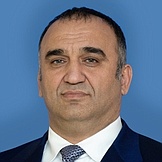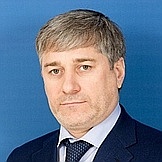Regional flags and emblems


PROFILE
Established 10 December 1992
Capital Grozny
The Chechen Republic is part of the North Caucasus Federal District
Area 16,200 sq km
Population 1 575 800 (2025)
Ethnic groups
(2020 National Census, %)
Chechen – 96,42
Russian – 1,21
Other – 2,37
Administrative divisions (2024)
Municipal districts – 15
City districts – 2
Rural towns – 4
Rural districts – 212
Geography and climate
The Chechen Republic is located in the central part of the northern slope of the Greater Caucasus Range and in the adjoining Chechen Plain and Terek-Kuma Lowland.
The republic shares borders with other regions of the Russian Federation- the Republic of Dagestan, the Republic of Ingushetia, the Republic of North Ossetia-Alania, and the Stavropol Territory; it has also a state border with Georgia.
The terrain is divided into four zones: alpine, mountains, foothills and plains. The area has high seismic intensity (earthquakes up to 9.0 magnitude).
The region has a continental climate, with mild winters and hot summers. Temperatures vary according to geographical location and height above sea level. January is the coldest month (temperatures average –1.5°С) and July is the hottest (temperatures average 25.3°С). The climate in the mountain area has therapeutic benefits and allows for the development of balneotherapy.
The region is home to protected natural areas, including the Sovetsky State Nature Sanctuary, the Argunsky History and Architecture Museum Reserve, seven biological sanctuaries, and one nature sanctuary – Argunsky.
Government
The legislative branch is represented by the Parliament of the Chechen Republic, which is the permanent, representative and only body of legislative authority in the region.
The Parliament has 41 deputies elected in the single electoral district under the proportional representation system.
The current Parliament of the Chechen Republic was elected in September 2021. Its term expires in September 2026.
Executive power in the Chechen Republic is exercised by the Head of the Chechen Republic (Mehk -Da), the Government of the Chechen Republic and some other executive authorities.
The Head of the Chechen Republic (Mehk-Da) is the republic’s highest-ranking official, who heads the Chechen Republic’s executive branch and has the right to head the Government of the Chechen Republic, its top executive body vested with state authority. Russian citizens living in the republic elect the Head of the Chechen Republic for a five-year term. The term of the current Head of the Chechen Republic expires in September 2026.
The Government of the Chechen Republic is the supreme and permanent body of executive authority of the republic. The Head of the Chechen Republic forms the Government of the Chechen Republic, which is accountable to him.
Economy and natural resources
The Chechen Republic is implementing a number of federal and regional programmes on economic and social development.
The biggest shares in the regional GDP belong to government management (over 19%), wholesale and retail trade (over 12%) and construction (over 12%). The share of the industry and agriculture is more than 10%.
Industry is focused on raw material extraction and electricity, gas and water production and distribution as well as processing.
Raw materials (about 11% in the structure of industrial production) are extracted at the explored gas and oil fields (Grozneftegaz company). There are also deposits of raw materials for the construction industry and mineral water. This is the only profitable industry, but it also tends to reduce production due to the fact that the existing fields are being depleted and no new ones are explored. Geological exploration is another important area of economic development.
The manufacturing sector (about 25% in the structure of industrial production) includes oil products, non-metallic mineral products, machine building and the food industry (Medinstument Gudermes Plant, Transmash Plant, Orgtekhnika Plant, Experiemental Plant of the Ministry of Industry, Grozny Electromechanical Plant and Argunsky Meat-processing Plant).
The Baku-Novorossiysk federal pipeline crosses the republic. The petrochemical complex is the base of the region’s economy, and its modernisation will accelerate its socioeconomic development.
Electricity, gas and water production and distribution is based on the energy complex represented by thermal and combined heat and thermal power stations. Pipelines provide access to gas supply networks in the South Caucasus and the Republic of Dagestan (Gazprom Mezhregiongaz Grozny).
Chechenenergo is the electricity distributor in the republic. Building new power stations is essential for the development of the manufacturing industry. Work is underway to build a cascade of hydroelectric power stations on the Argun River as well as combined heat and power stations in the cities of Agrun and Grozny. More than 90% households in the region have access to the gas supply system.
In agriculture, livestock farming is more prominent than plant growing. Beef and dairy production, sheep breeding, and the production of grain, legumes and sunflower are traditional agricultural areas. There are favourable conditions for growing vegetables and fruit as well as fish farming.
The main crops cultivated in the republic are fruit, vegetables, cereals and legumes; the main livestock areas are meat and dairy production as well as sheep breeding (Naur Agricultural Farm and Chechenagroholding) and poultry farming (Staroyurtovskaya and Urus-Martan poultry factories and Naur Incubator-Poultry Station).
Supported by the federal centre, the Chechen Republic’s leadership succeeded in building a portfolio of investment projects for the industrial, energy, construction, transport, communications, agriculture, recreation and tourism sectors.
Culture and tourism
Today’s culture of the Chechen Republic is represented best in its capital, the city of Grozny. The capital has Lermontov State Russian Drama Theatre, Nuradilov Chechen State Drama Theatre and Shakhbulatov Chechen State Philharmonic Hall and Chechen Republic National Museum. National dance companies, such as Vainakh State Dance Company and Daimokhk Children’s State Danse and Song Company, are widely known outside the region.
Heart of Chechnya Cathedral Mosque is the capital’s main landmark. It is named after Akhmat Khadzhi Kadyrov, the first president of the Chechen Republic. It is part of a remarkable complex and is considered the largest mosque in Russia and Europe.
The Chechen Republic has all the necessary resources for various types of tourism, including educational, sports, recreation, historical, cultural and mixed tourism.
Picturesque landscapes, fresh mountain air and mountain lakes as well as numerous historical, cultural and architectural landmarks and the opportunity to gain an insight into the Caucasus culture make Chechnya an attractive and fascinating destination and create all the conditions for tourism and recreation development.
Tourist itineraries include the republic’s nature reserves and sanctuaries (Argun Historical and Architectural Museum-Reserve, Vedeno and Shali biological sanctuaries).
Another special sight located in the mountainous part of the republic is stone towers rising above mountain villages’ terraces. They are considered the most significant architectural masterpiece of the Chechen Republic and have become something like stone chronicles for researchers. Over 300 temples and 100 mosques, many of which are architectural gems, belong to the region’s religious institutions.
Alpine tourism development should give a powerful impetus to investment and business activities of the people living in Chechnya’s mountain areas. In total, the establishment of a mountain tourism cluster will become an additional factor for the development of small and medium business in the region.
Mineral springs play an important role in the republic’s tourism development. They are unique in their composition, combining hydrogen sulfide, radon and radium emanation. The chemical composition of the Yaryshmardon springs is similar to the world-renowned Matsesta mineral waters. The Sernovodsk, Goryachevodsk, Braguny and Isti-Suisk thermal springs are especially valuable for balneotherapy.


